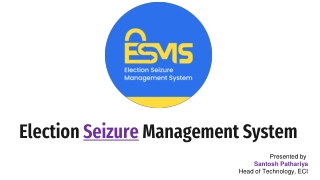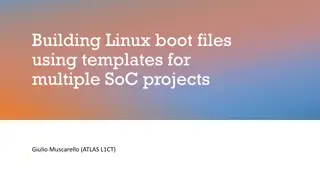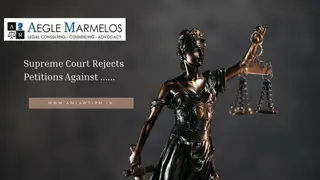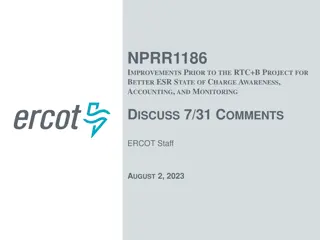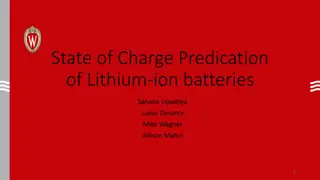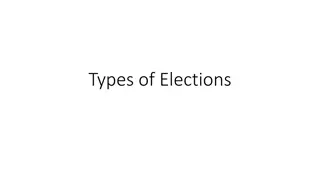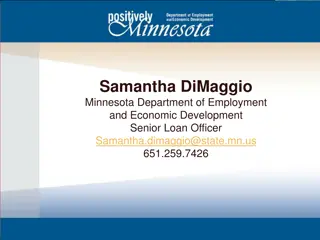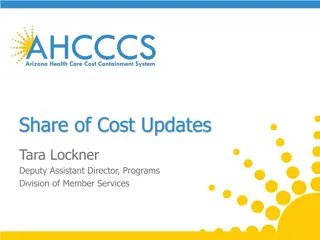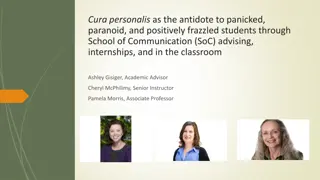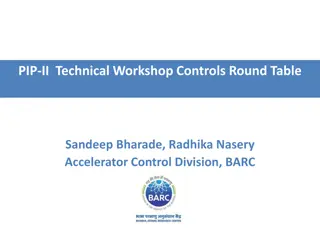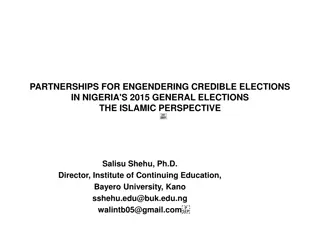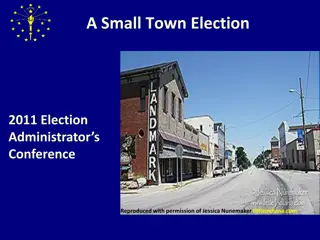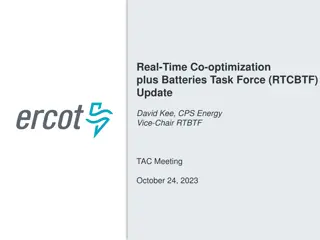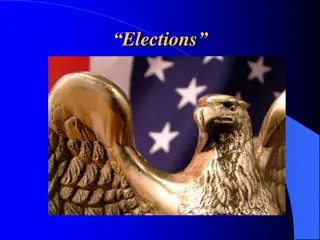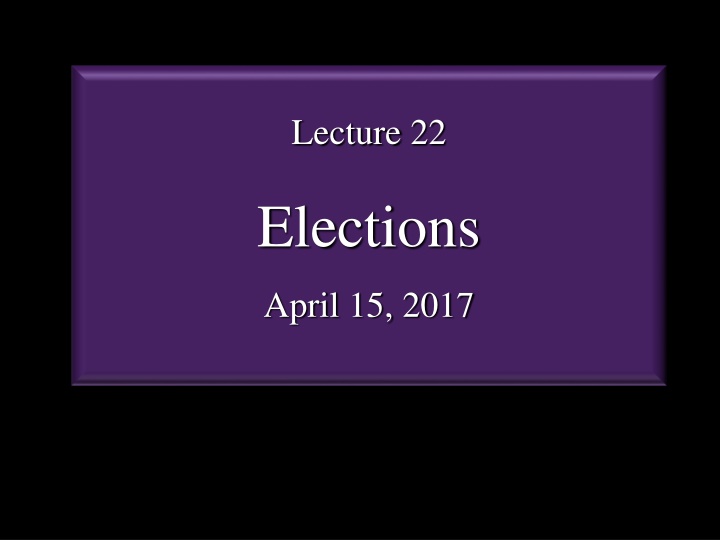
Motivation Behind Voting in Elections
Explore the reasons why people bother to vote despite the perception of individual votes not making a difference. Delve into the costs associated with voting, the impact of voter apathy on democracy, and the underlying motivations that drive individuals to participate in elections.
Download Presentation

Please find below an Image/Link to download the presentation.
The content on the website is provided AS IS for your information and personal use only. It may not be sold, licensed, or shared on other websites without obtaining consent from the author. If you encounter any issues during the download, it is possible that the publisher has removed the file from their server.
You are allowed to download the files provided on this website for personal or commercial use, subject to the condition that they are used lawfully. All files are the property of their respective owners.
The content on the website is provided AS IS for your information and personal use only. It may not be sold, licensed, or shared on other websites without obtaining consent from the author.
E N D
Presentation Transcript
Lecture 22 Elections April 15, 2017
I. Voting & Apathy WHY DO PEOPLE BOTHER TO VOTE? The problem: 1.In a large election, one vote never makes a difference. 2.There are some costs attached to voting: getting information about candidates and parties, voter registration procedures, getting to the polls, waiting in line. 3.Since there is zero chance that there is any benefit from your individual act of voting (since one vote never decides an election), and since there are real costs to voting, why bother voting? 4.But if most people think this way, few people vote and democracy is weakened. Another prisoner s dilemma!
I. Voting & Apathy WHY DO PEOPLE BOTHER TO VOTE? The problem: 1.In a large election, one vote never makes a difference. 2.There are some costs attached to voting: getting information about candidates and parties, voter registration procedures, getting to the polls, waiting in line. 3.Since there is zero chance that there is any benefit from your individual act of voting (since one vote never decides an election), and since there are real costs to voting, why bother voting? 4.But if most people think this way, few people vote and democracy is weakened. Another prisoner s dilemma!
I. Voting & Apathy WHY DO PEOPLE BOTHER TO VOTE? The problem: 1.In a large election, one vote never makes a difference. 2.There are some costs attached to voting: getting information about candidates and parties, voter registration procedures, getting to the polls, waiting in line. 3.Since there is zero chance that there is any benefit from your individual act of voting (since one vote never decides an election), and since there are real costs to voting, why bother voting? 4.But if most people think this way, few people vote and democracy is weakened. Another prisoner s dilemma!
I. Voting & Apathy WHY DO PEOPLE BOTHER TO VOTE? The problem: 1.In a large election, one vote never makes a difference. 2.There are some costs attached to voting: getting information about candidates and parties, voter registration procedures, getting to the polls, waiting in line. 3.Since there is zero chance that there is any benefit from your individual act of voting (since one vote never decides an election), and since there are real costs to voting, why bother voting? 4.But if most people think this way, few people vote and democracy is weakened. Another prisoner s dilemma!
I. Voting & Apathy So: Why do people vote?
I. Voting & Apathy Answer It only makes sense to vote if you do not make the decision on the basis of simple cost-benefit calculation. People vote mainly because they see it as a civic obligation and they believe it is wrong to be a free rider on other people s efforts.
I. Voting & Apathy Answer It only makes sense to vote if you do not make the decision entirely on the basis of a simple cost-benefit calculation. People vote mainly because they see it as a civic obligation and they believe it is wrong to be a free rider on other people s efforts.
I. Voting & Apathy Implication: two key issues in explaining variations in voting 1. Variations in sense of civic obligation 2. Variations in the barriers and costs to voting
I. Voting & Apathy Implication: two key issues in explaining variations in voting 1. Variations in the barriers and costs to voting 2. Variations in sense of civic obligation
Average voter turnout in national elections for lower legislative house, 1945-2013
I. Voting & Apathy Voter Turnout in U.S. National Elections, 1948-2016 Presidential Election Off-year congressional election Turnout rate (% of voting age population) 70% 65% 60% 54.7% 55% 50% 45% 40% 35% 30% 25% 2016 1948 1956 1964 1972 1980 1988 1996 2004 2012
I. Voting & Apathy How U.S. social conditions and political institutions undermine voting 1. Costs of voting: cumbersome registration rules; photo I.D. cards 2. Consumerism, individualism and privatism undermine value of collective institutions, including democracy. 3. Constant attack on the affirmative state undermines people s identification with government and belief in politics 4. High levels of inequality erode the sense of community and the sense of civic obligation. 5. The role of money in politics makes many people feel cynical about participation: corruption breeds cynicism and cynicism breeds apathy
I. Voting & Apathy How U.S. social conditions and political institutions undermine voting 1. Costs of voting: cumbersome registration rules; photo I.D. cards 2. Consumerism, individualism and privatism undermine value of collective institutions, including democracy. 3. Constant attack on the affirmative state undermines people s identification with government and belief in politics 4. High levels of inequality erode the sense of community and the sense of civic obligation. 5. The role of money in politics makes many people feel cynical about participation: corruption breeds cynicism and cynicism breeds apathy
I. Voting & Apathy How U.S. social conditions and political institutions undermine voting 1. Costs of voting: cumbersome registration rules; photo I.D. cards 2. Consumerism, individualism and privatism undermine value of collective institutions, including democracy. 3. Constant attack on the affirmative state undermines people s identification with government and belief in politics 4. High levels of inequality erode the sense of community and the sense of civic obligation. 5. The role of money in politics makes many people feel cynical about participation: corruption breeds cynicism and cynicism breeds apathy
I. Voting & Apathy How U.S. social conditions and political institutions undermine voting 1. Costs of voting: cumbersome registration rules; photo I.D. cards 2. Consumerism, individualism and privatism undermine value of collective institutions, including democracy. 3. Constant attack on the affirmative state undermines people s identification with government and belief in politics 4. High levels of inequality erode the sense of community and the sense of civic obligation. 5. The role of money in politics makes many people feel cynical about participation: corruption breeds cynicism and cynicism breeds apathy
I. Voting & Apathy How U.S. social conditions and political institutions undermine voting 1. Costs of voting: cumbersome registration rules; photo I.D. cards 2. Consumerism, individualism and privatism undermine value of collective institutions, including democracy. 3. Constant attack on the affirmative state undermines people s identification with government and belief in politics 4. High levels of inequality erode the sense of community and the sense of civic obligation. 5. The role of money in politics makes many people feel cynical about participation: corruption breeds cynicism and cynicism breeds apathy
I. Voting & Apathy How U.S. social conditions and political institutions undermine voting 1. Costs of voting: cumbersome registration rules; photo I.D. cards 2. Consumerism, individualism and privatism undermine value of collective institutions, including democracy. 3. Constant attack on the affirmative state undermines people s identification with government and belief in politics 4. High levels of inequality erode the sense of community and the sense of civic obligation. 5. The role of money in politics makes many people feel cynical about participation: corruption breeds cynicism and cynicism breeds apathy.
II. REPRESENTATION RULES 1.Key idea Different electoral rules of the game generate very different dynamics of political competition with very different long term effects on democratic life. Of particular importance = the rules of electoral competition and representation shape the number and strength of political parties.
II. REPRESENTATION RULES 2. Basic Structure of US system Single member districts with plurality voting, also called first past the post single member districts : Whoever gets the most votes wins. Example: Three candidates, one gets 34% of the vote, the other two each gets 32% of the vote. The first candidate is elected. Consequence: two party duopoly because of fear of wasting vote on third parties. This encourages lesser of two evils voting
II. REPRESENTATION RULES 3. Voting rules in the past in the US Fusion voting in 19th Century US: Basic idea: two parties could nominate the same candidate, so that candidate could appear o9n the ballot more than once, under different party lines. This increased the strength of third parties and their role in elections. Most important case in the 19th century = The Populist Party Still exists in a few places, like New York. New York has the strongest third parties in the nation.
II. REPRESENTATION RULES 4. Alternative voting rules that might increase the democraticness of elections Proportional Representation [PR]: multi-member districts with each party running multiple candidates on a party list . Candidates are elected proportionately to the vote for the party. Instant Run-off voting [IRV]: You rank-order the candidates on the ballot when you vote. Proxy voter-representation: All candidates receiving above a threshold (e.g. 20% of votes) are elected; in the legislature representatives cast the number of votes they received in election. Second preference votes of excluded candidates are redistributed to elected candidates
II. REPRESENTATION RULES 4. Alternative voting rules that might increase the democraticness of elections Proportional Representation [PR]: multi-member districts with each party running multiple candidates on a party list . Candidates are elected proportionately to the vote for the party. Instant Run-off voting [IRV]: You rank-order the candidates on the ballot when you vote. Proxy voter-representation: All candidates receiving above a threshold (e.g. 20% of votes) are elected; in the legislature representatives cast the number of votes they received in election. Second preference votes of excluded candidates are redistributed to elected candidates
II. REPRESENTATION RULES Instant Run-off Elections: how it works Candidates 1st place votes 2nd choices Vote count after first round Vote count after second round A B C A 1700 - 1500 200 1700 = 28% X B 2100 1500 - 600 2100 = 35% 3600 = 60% C 2200 300 2000 - 2200 = 37% 2400 = 40%
II. REPRESENTATION RULES 4. Alternative voting rules that might increase the democraticness of elections Proportional Representation [PR]: multi-member districts with each party running multiple candidates on a party list . Candidates are elected proportionately to the vote for the party. Instant Run-off voting [IRV]: You rank-order the candidates on the ballot when you vote. Proxy voter-representation: All candidates receiving above a threshold (e.g. 20% of votes) are elected. Second preference votes of excluded candidates are redistributed to elected candidates. In the legislature, legislators cast the number of votes they received in election.
II. REPRESENTATION RULES Proxy-voter representation: how it works Votes cast in representative in the legislature % of total votes Redistributed second preference votes of voters for candidate D Candidat es votes outcome A 35,000 35% elected 0 35,000 B 30,000 30% elected 12,000 42,000 C 20,000 20% elected 3,000 23,000 Not elected D 15,000 15% - -
III. ELECTORAL DISTRICTS Hypothetical Example of How District Boundaries can affect Electoral Outcomes District Number Votes for Votes for Republican candidate Winner in election Democratic candidate 1 2 million 100,000 Democrat 2 1 million 1.1 million Republican 3 1 million 1.1 million Republican Total 4 million 2.3 million 1 Democrat, 2 Republicans 33.3% Democrats 66.3% Republicans 63.5% 36.5%
III. ELECTORAL DISTRICTS Packing & Cracking Redrawing the balanced electoral districts in this example creates a guaranteed 3-to-1 advantage in representation for the blue voters. Here, 14 red voters are packed into the lower left district and the remaining 18 are cracked across the 3 blue districts. From Wikipedia
Gerrymandering effects in the 2012 elections for U.S. House of Representatives Votes Republicans Seats Republicans Democrats Democrats U.S. House 201 234 53,952,240 53,402,643 Wisconsin 3 5 1,443,190 2,702,901 1,399,871 2,627,031 Pennsylvania 5 13 One of worst cases: Pennsylvania Margin of victory in Democratic Seats vs Republican Seats Democrats won their districts by 52.6 % points on average Republicans won their districts by 18.7% points on average
IV. MONEY AND POLITICS Two core problems 1. Lobbying: Legislators have limited staffs to study problems, work out policies, acquire information. Well-funded lobbyists provide vast amounts of slick information to politicians and government officials 2. Campaign Finance It costs an enormous amount to run for national public office, and almost always the candidate with the most money wins. Does this undermine equality of citizens in a democracy?
IV. MONEY AND POLITICS Two core problems 1. Lobbying: Legislators have limited staffs to study problems, work out policies, acquire information. Well-funded lobbyists provide vast amounts of slick information to politicians and government officials 2. Campaign Finance It costs an enormous amount to run for national public office, and almost always the candidate with the most money wins. Does this undermine equality of citizens in a democracy?
IV. MONEY AND POLITICS Two core problems 1. Lobbying: Legislators have limited staffs to study problems, work out policies, acquire information. Well-funded lobbyists provide vast amounts of slick information to politicians and government officials 2. Campaign Finance It costs an enormous amount to run for national public office, and almost always the candidate with the most money wins. Does this undermine equality of citizens in a democracy?
IV. MONEY AND POLITICS Campaign Finance: the legal context Two Supreme Court cases: Buckley v Valeo (1976 ) and Citizens United v Federal Elections Commission (2010) Basic ruling declared that most restrictions on campaign spending amount to restrictions on free speech. The Government cannot restrict: Candidates spending from their own pockets Overall level of spending Independent expenditures on issue ads Corporations spending on independent ads for candidates Only real limits = on direct contributions to candidates (but there are ways to get around this).
IV. MONEY AND POLITICS Campaign Finance: the legal context Two Supreme Court cases: Buckley v Valeo (1976 ) and Citizens United v Federal Elections Commission (2010) Basic ruling declared that most restrictions on campaign spending amount to restrictions on free speech. The Government cannot restrict: Candidates spending from their own pockets Overall level of spending Independent expenditures on issue ads Corporations spending on independent ads for candidates Only real limits = on direct contributions to candidates (but there are ways to get around this).
IV. MONEY AND POLITICS Consequences: Candidates without strong financial networks or personal fortunes cannot run for office: the Senate is filled with millionaires. Candidates get the vast portion of their money from wealthy individuals and corporations: in 2008 only 1% of adult population contributed $200 or more to political campaigns. There is a strong correlation of the votes of politicians and their sources of funding. Example: The 213 members of congress who voted to spend almost half a billion more on B-2 stealth bombers received on average $2100 from the contractor; the 210 who voted against only got $100. [Note: this does not prove quid- pro-quo]
IV. MONEY AND POLITICS Consequences: Candidates without strong financial networks or personal fortunes cannot run for office: the Senate is filled with millionaires. Candidates get the vast portion of their money from wealthy individuals and corporations: in 2008 only 1% of adult population contributed $200 or more to political campaigns. There is a strong correlation of the votes of politicians and their sources of funding. Example: The 213 members of congress who voted to spend almost half a billion more on B-2 stealth bombers received on average $2100 from the contractor; the 210 who voted against only got $100. [Note: this does not prove quid- pro-quo]
IV. MONEY AND POLITICS Consequences: Candidates without strong financial networks or personal fortunes cannot run for office: the Senate is filled with millionaires. Candidates get the vast portion of their money from wealthy individuals and corporations: in 2008 only 1% of adult population contributed $200 or more to political campaigns. There is a strong correlation of the votes of politicians and their sources of funding. Example: The 213 members of congress who voted to spend almost half a billion more on B-2 stealth bombers received on average $2100 from the contractor; the 210 who voted against only got $100. [Note: this does not prove quid- pro-quo]
IV. MONEY AND POLITICS Campaign Finance: solutions? (1) The Patchwork Option (2) Direct public funding of campaigns (3) The Democracy Card (4) A more radical solution: Replace one elected chamber with a randomized citizen assembly
IV. MONEY AND POLITICS Campaign Finance solutions (1) The Patchwork Option keep adding targeted restrictions and provisions. The McCain-Feingold campaign finance reform was an example. Citizens United undermined this solution.
IV. MONEY AND POLITICS Campaign Finance solutions (2) Direct Public Funding: The Clean Elections Act Candidates who participate agree to accept only public funding To qualify, need a specified number of $5 contributions Special provisions for start-up funds No matching funds: all candidates get the same Clean Election candidates get more money if outspent by privately funded candidates
IV. MONEY AND POLITICS (3) The Democracy Card Every registered voter gets (for example) a $50 political credit card when they register to vote. This card can be used to make contributions to any political candidate or political organization. With 130 million registered voters, this comes to a maximum of $6.5 billion dollars per year for all elections If a candidate gets any private contributions they cannot use any democracy money. There is no limit to how much money a candidate can get through democracy card donations. Allocating democracy card money is therefore itself an egalitarian political act candidates first campaign for democracy dollars and then for votes, but both are based on equality of citizens.
IV. MONEY AND POLITICS (3) The Democracy Card Every registered voter gets (for example) a $50 political credit card when they register to vote. This card can be used to make contributions to any political candidate or political organization. With 130 million registered voters, this comes to a maximum of $6.5 billion dollars per year for all elections If a candidate gets any private contributions they cannot use any democracy money. There is no limit to how much money a candidate can get through democracy card donations. Allocating democracy card money is therefore itself an egalitarian political act candidates first campaign for democracy dollars and then for votes, but both are based on equality of citizens.
IV. MONEY AND POLITICS (3) The Democracy Card Every registered voter gets (for example) a $50 political credit card when they register to vote. This card can be used to make contributions to any political candidate or political organization. With 130 million registered voters, this comes to a maximum of $6.5 billion dollars per year for all elections If a candidate gets any private contributions they cannot use any democracy money. There is no limit to how much money a candidate can get through democracy card donations. Allocating democracy card money is therefore itself an egalitarian political act candidates first campaign for democracy dollars and then for votes, but both are based on equality of citizens.
IV. MONEY AND POLITICS (3) The Democracy Card Every registered voter gets (for example) a $50 political credit card when they register to vote. This card can be used to make contributions to any political candidate or political organization. With 130 million registered voters, this comes to a maximum of $6.5 billion dollars per year for all elections If a candidate gets any private contributions they cannot use any democracy money. There is no limit to how much money a candidate can get through democracy card donations. Allocating democracy card money is therefore itself an egalitarian political act candidates first campaign for democracy dollars and then for votes, but both are based on equality of citizens.

